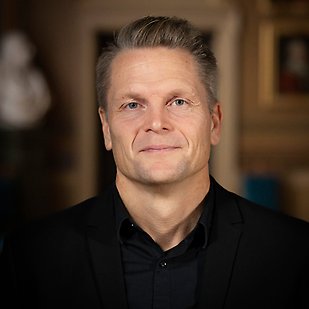New professors 2022
Fifty-three new professors were inaugurated at Uppsala University on 18 November 2022. They present their research here.
Go to:
Faculty of Arts
Mikael Alm, History
Human societies are fundamentally unequal. Politically, some have more power than others. Economically, some are richer than others. Socially, some are considered to be more elevated and noble than others.
I take an interest in power relations such as these in my research, and how they have been expressed and justified. I have taken a particular interest in the period of European history known as the Age of Revolution – the period from the mid-18th century to the beginning of the 19th century. It was a time of upheaval and change, when the old Europe shaped and developed since the Middle Ages became the modern Europe that we see during the 19th and 20th centuries. The power relations of the time were to a great extent part of the change. Politically, autocratic kings were followed by democracies; economically, agrarian economies were followed by industrial economies; and socially, estate-based societies were followed by class societies.
With respect to the political aspects, I have long focused on the attempts of the Gustavian kings to justify their hold on power and the corresponding attempts of the Bernadotte monarchy after the fall of the absolute monarchy in 1809. More recently, I have taken a greater interest in the social aspects, such as the role of dress in the manifestation of social status at a time of change in the perception of inequality and hierarchies.
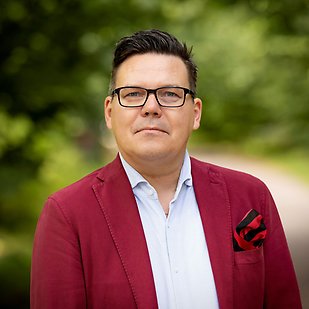
Gudrun Andersson, History
My research is rooted in an interest in the history of everyday life, with an ambition to analyse people's perceptions of the society of which they were part. In terms of time period, I have focused on the early modern period of modern history, around 1650–1850. The period was characterised by major changes – politically, economically and socially – all of which affected the relationships and conditions of everyday life.
Rarely has everyday life left clear traces. I have therefore used a wide range of sources and pieced together both what has been said outright and what I could glean from between the lines. I have used court records, as well as fashion magazines from 1800 onwards, in order to analyse perceptions of what is feminine and what is masculine. In this way, I have shown that women's scope for action has been more permissive than was often thought. Using estate inventories and accounts, I have highlighted the material culture and the bourgeoisie's manifestation of status. As in the fashion magazines, this reveals the consumer society of the 19th century with its gender-specific fashion ideals. Finally, diaries are obvious materials for everyday life, from which I have drawn on for daily routines, spatiality and socialising.
Each piece of the puzzle tells us a lot, but taken together they reveal an everyday life that has undergone major changes. At the same time, however, many structures, in particular relating to the feminine and masculine, demonstrate a continuity over time – at times up to the present day.
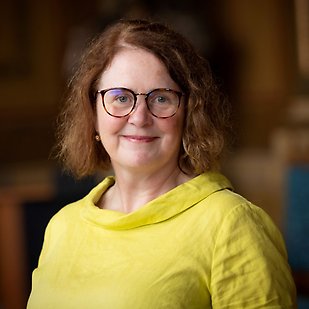
Jenny Björklund, Gender Research
My research mostly focuses on fiction through gender and queer theoretical perspectives. I analyse how gender and other power structures are expressed in fiction, but I am also interested in the relationship between fiction and society. Since fiction has its roots in the real world, it is shaped by and has an influence on its social and cultural contexts.
For example, in my latest book I ask why so many mothers leave their families in the Swedish literature of this century. I analyse literary representations of mothers who leave their families, and link them to socio-political discourses on motherhood, family and equality in contemporary Sweden. I have also written a book on lesbianism in Swedish fiction 1930–2005.
My current research mainly focuses on family studies, partly on the way in which childlessness is represented in fiction, and partly on the relationship between people's decisions about having children and the climate crisis and environmental issues. In addition, I am collaborating with computer scientists on a project on gender in AI and machine learning.
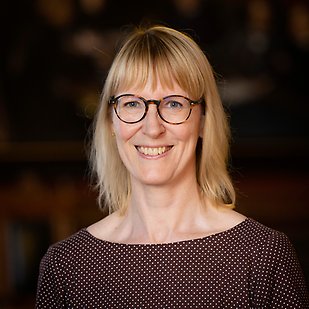
Christina Fredengren, Conservation
The problematic nature of human beings needs to be explored, both from a gender perspective and a species perspective. My research challenges approaches that put human beings at the centre of archaeology and cultural environment studies.
In archaeology, I examine how people relate to aquatic environments, such as streams, lakes and peat bogs. This includes studies of artefacts in landfills or human and animal remains in wetlands. How sacrifice may have changed the relationship between them is an interesting question. Furthermore, I am interested in how different water bodies have been known to have their own personal characteristics and afforded protection and rights as living beings.
Time, in particular deep time, is another research interest. This involves questions about what is inherited over longer periods of time and what relationships are formed over time. How does our pattern of behaviour need to change if we want to be better guardians for future generations? What happens if we view carbon dioxide emissions as cultural heritage (albeit an unwanted one) with their long-term impact on people, animals and nature? Furthermore, speaking of future generations – are they not both human and more than human?
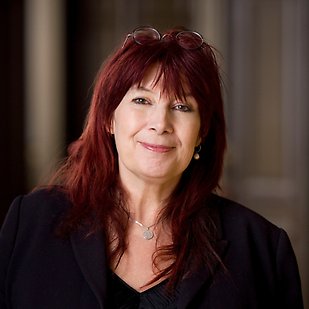
Orsi Husz, History of Science and Ideas
My research deals with the cultural and intellectual history of economic life. Rather than studying the ‘economy’ as a structural phenomenon, my interest is in the ways in which people have thought about and become engaged in what are perceived to be economic activities.
Among other things, I have studied dreams of consumerism linked to the department stores of the early 20th century, as well as everyday hopes and political ideas around lottery games through recorded history. I have written about how ideals of private economy and practices in household budgets create social class, about how credit cards became the property of the average person, and how it is that we now rely on our banks – at least in Sweden – when we need to verify our identities.
The question that has guided much of my research is how people became drawn together in different time periods and alternated and balanced between different kinds of values: economic, moral, cultural, emotional and others. Another important question is how financial phenomena have increasingly come to permeate everyday life since the second half of the 20th century.
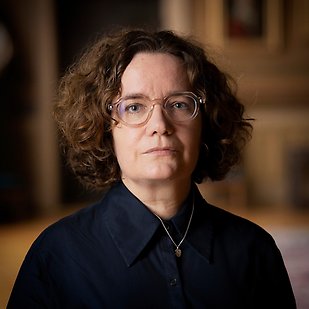
Karl-Johan Lindholm, Archaeology
The purpose of my research is to develop archaeological theory and methodology for use in interdisciplinary environmental research aimed at a better understanding of the part played by land use in landscape change. My field of research is known as historical ecology, which can be described as environmental research that incorporates long-term perspectives and historical analysis with the aim of a better understanding of our environments and the contribution of knowledge for the sustainable management of natural resources, as well as the biocultural heritage of landscapes.
I have been particularly interested in understanding landscapes described as marginal or peripheral, such as the Kalahari in southern Africa and the so-called boreal forest areas of inland Scandinavia, in relation to the larger culture-historical processes that have taken place. I have combined archaeological knowledge with rural development and landscape studies in order to achieve a better understanding of both past and present forms of collective management of natural resources.
I work with both digital methods and geographic information systems (GIS) in my research in order to perform integrated interdisciplinary landscape analyses that incorporate archaeological and historical information, place names, topography, and ecology. An additional interest is to enable access to archaeological and interdisciplinary research data by building research infrastructure that facilitates future environmental research.
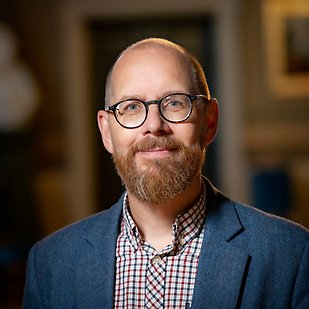
Andrew Reisner, Practical Philosophy
My research has mainly concentrated on four themes: questions about what beliefs or perceptions we should hold; the nature of the rational demands to which we are subject; how different types of normativity (practical, theoretical, affective) relate to each other; and questions about what it means for something to have a value. The common denominator is an interest in how different types of normative requirements combine to form conclusions about how we should live and how we should be.
One of my prioritised projects has been to develop a coherent vision for how truth-based and value-based considerations interact when it comes to determining what beliefs we should hold. I have also explored the related question of why what we should all collectively believe or want may differ from what we should believe or want from a purely rational perspective.
The objective is and has been to highlight the requirements and criteria by which our actions and thinking can be evaluated in order to not only increase our understanding of those particular issues, but also to provide a good basis for further research into both ethics and the study of our beliefs.
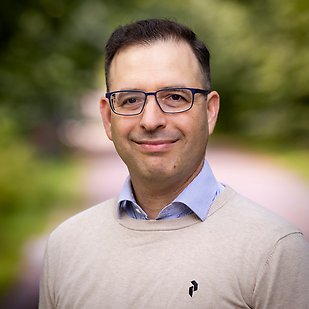
Eva Lindqvist Sandgren, Art History
My research is primarily concerned with medieval art, especially the visual arts that can be found in medieval manuscripts. My thesis dealt with medieval book illuminations from France.
I have been researching the images, textiles and architecture of Vadstena Abbey since 2006. More recently, I have led an interdisciplinary project on the visual and acoustic environment of Vadstena Abbey Church. The research team has used digital technology to recreate the late medieval spatial experience in 3D and to create so-called auralisations of different locations in the model of the church – a method in which calculations for the acoustics were based both on where the sources of the sound originated and on how the church was decorated.
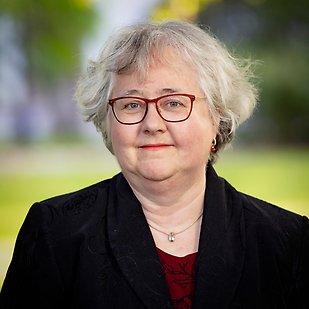
Faculty of Law
Erika P. Björkdahl, Civil Law
The laws of the Kingdom of Sweden must serve many purposes and interests. There are often several purposes and interests within a specific area, some of which almost compete with each other or at least are difficult to reconcile. When this is the case, the task of designing effective and legally sound rules can be both arduous and particularly complicated – and sometimes the legislature fails.
Conflicts of this kind in the field of property law have been of interest in my research. My approach has been to classify in legal terms different parts of the field in relation to each other. The aim has been to clarify whether, and to what extent, the separate drafting of laws and regulations leads in practice to conflicting objectives and inefficiency.
The research shows that parts of property law suffer from inconsistencies, which result in the purpose of the regulations not being met and the effect intended by the legislature not being achieved.
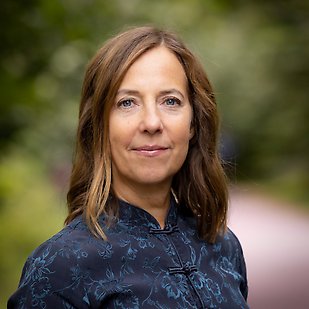
Faculty of Medicine
Robert Bodén, Psychiatry
Serious mental health conditions such as schizophrenia, bipolar disorder and major depression, usually emerge at a young age and then follow sufferers throughout their lives. The consequences entail suffering and loss of function.
I have studied patients with these conditions through interviews and health records during the course of my research. I have found that patients who take medication on a regular basis have shown the most progress, but also that adverse drug reactions can be detected, such as weight gain, cardiovascular disease and diabetes. I have also identified the consequences of difficult-to-treat depression, such as reduced quality of life, substance abuse and shortened life expectancy.
More effective treatments are needed. In recent years, I have shifted my focus towards developing new physical treatments, for example by using electromagnetism to influence the function of different networks in the brain. I am currently studying the effects of the main available treatment method, ECT, or electroconvulsive therapy.
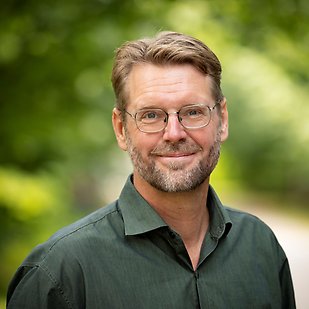
Karin Enskär, Paediatric Nursing
Research in paediatric nursing examines issues relating to the relationship between the health professionals and the child and their family, where the caregiving actions are based on the health status of the child with the aim of meeting the needs of the child and the family in order for them to experience health and well-being.
My research concerns various aspects of health and nursing for children with different medical conditions, in particular children with cancer. My research has studied how children with cancer and their families experience their daily lives and how health professionals can provide support and assistance. Among other things, the results of my research show that examinations and treatments in the healthcare sector, such as tests or vaccinations, create anxiety, fear and pain in the child. Similarly, witnessing the child's suffering affects all members of the family. It is important to establish a good health care relationship and promote the involvement of children and parents in care and decisions large and small, in order to provide support and assistance to both children and families. This requires various educational and informational activities to provide children and parents with the appropriate knowledge of what is going to happen.
My research also shows that children undergoing painful examinations and treatments can be helped by access to different types of pharmacological and non-pharmacological treatments, such as medicinal products for pain relief and/or anxiety relief. Different types of non-pharmacological strategies are important for many children, in order to reduce anxiety, fear and pain. These strategies need to be adapted to the age, knowledge and interests of the individual child. Help for a child to cope with the situation can be provided by offering some form of distraction, such as blowing soap bubbles, colouring in a colouring book, reading a book or watching a film. In a stressful clinical care setting, it can be challenging to find the time to offer strategies such as these, so we are currently studying how health professionals can be encouraged to offer individualised strategies for children who are undergoing painful procedures.
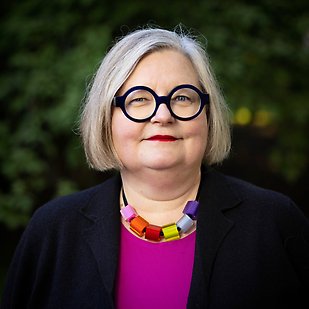
Anna T. Höglund, Care Ethics and Gender Studies
Care ethics focus on the ethical aspects of the meeting between the caregiver and the patient in the centre. How can a respectful meeting take place, given the higher competence of the caregiver and the vulnerability and dependency of the patient? As patients, we are at a unique stage of life, while the caregiver is carrying out his/her daily work. This places great ethical demands on how the healthcare meeting should take place and it is this meeting that care ethics focus on.
Care ethics are relevant throughout the course of a life, from pregnancy and childbirth, to end-of-life care. My research has therefore addressed ethical issues surrounding new reproductive technologies and pre-pregnancy genetic screening, as well as the ethics surrounding palliative care for cancer patients. I have also conducted research on the experiences of caregivers with priorities in healthcare, on ethical stress, and on ethical competence of doctors and nurses.
Other issues I have studied include equality of care from a gender perspective, and the need for ethical competence in the management and governance of care. My research is conducted on a consistent clinical basis and aims to provide definitive guidance on how to deal with ethical dilemmas in healthcare.
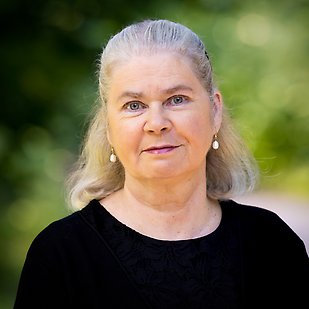
Niklas Juth, Clinical Medical Ethics
I am interested in ethical issues, that is, issues that concern people's basic norms and values. My focus is on ethical issues in the healthcare sector. I am interested in what norms and values are actually held by different groups and what values and norms we should maintain and act upon. This means that I conduct research on the actual values of groups by using questionnaire surveys and interviews, among other things, as well as more moral-philosophical reasoning about what should be done. I have focused in particular on the ethical issues that arise at the intersection between political philosophy and medical ethics – especially issues related to people's autonomy and justice in the healthcare sector.
My research in recent years has focused to some extent on compulsory care in both psychiatric and somatic care. This area is exciting because it deals with the limits of patient and citizen autonomy – but also with our understanding of the fundamental rights of different people. For example, it is permissible to coerce psychiatric patients to a greater extent than other patients. I have also taken a great interest in priorities in the healthcare sector. One type of question has been about general grounds for such priorities; for example, needs, seriousness of illness and patient responsibility. I have also examined specific priority issues such as how society should view funding for medicinal products for rare diagnoses, and I have worked on issues related to end-of-life care and screening.
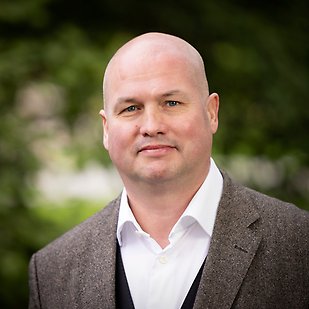
Josef Järhult, Infectious Diseases
Many patients who take antibiotics for a urinary tract infection are grateful to modern medicine without giving much thought to what happens to pharmaceutical residues in their urine or to the resistant bacteria selected in their intestinal flora. Understanding how resistance occurs and spreads in the environment, in animals and in humans, is a key aim of my research.
Pharmaceutical residues that pass through wastewater treatment plants can cause multiple problems. We have shown that low levels of antibiotic residues in water can lead to the selection of resistant bacteria in aquatic birds, but also that anti-influenza pharmaceuticals can lead to the development of resistance. This is because the influenza virus is naturally present in ducks, which can be exposed to pharmaceutical residues in water downstream of wastewater treatment plants. We have shown that such resistance can develop, and since duck viruses form the basis for new human influenza viruses, there is a risk of a resistant pandemic.
My research has shown that antibiotic resistance can spread in countries where antibiotic additives are used in animal feed and where animals and humans live in close proximity. Resistance can also spread on Swedish farms between calves, flies and rodents. Understanding and countering the development and spread of resistance requires a broad, multidisciplinary approach that sees humans, animals and the environment as one interacting whole – called ‘One Health’.
Joint prostheses are one example of where infections in foreign materials are particularly difficult to treat, and my research includes clinical studies on such infections as well as methods to prevent them through improved implants. Finally, I also study patients who are critically ill with COVID-19 and how the virus behind the disease develops.
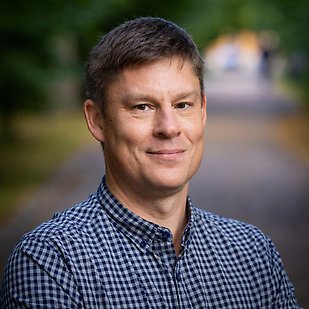
Tryggve Nevéus, Paediatrics
Much of my research has focused on night-wetting, or nocturnal enuresis, a common problem that causes great suffering. In the past, this was considered to be a psychiatric condition. For example, Sigmund Freud argued that children wet the bed because of frustrated sexuality. Now we know better. Nocturnal enuresis is caused by the kidneys producing too much urine at night, or the bladder contracting too easily, combined with the child sleeping particularly deeply. I have helped reach the conclusion that this is the case.
There are three recommended first-line treatments for nocturnal enuresis: bladder training (drinking and urinating regularly according to a schedule); the bed-wetting alarm (a device that affects sleep by waking the child when a moisture sensor detects the start of urination); or a medication for the kidneys to reduce urine production during the night. With the assistance of my doctoral students, I have found that bladder training does not help; it is simply a waste of time for both the children and their families. We have also studied the possibilities of identifying in advance the children likely to become dry using a bed-wetting alarm, and the children likely to find this simply a waste of time.
Finally, we have investigated what can be done to help children who do not become dry at night from any of the first-line treatments. We have found that medication that affects the depth of sleep can work in about half of these children.
The work of my research group will hopefully eventually lead to millions of children around the world not being ashamed of their nocturnal enuresis.
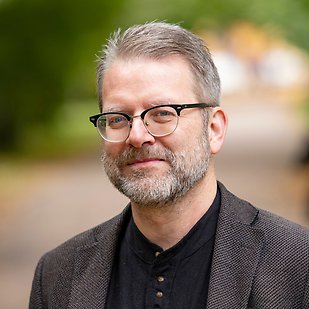
Dag Nyholm, Neurology
Neurology is the study of the nervous system and its diseases. One of the most common neurological diseases is Parkinson's disease, which causes increasing difficulties with mobility, but also completely other symptoms such as a reduced sense of smell and sensitivity to stress.
Treatment involves symptomatic relief, which usually works well for the first few years. However, over time the efficacy of the medication becomes weaker and weaker, while sensitivity to side effects increases. As a result, symptoms may fluctuate rapidly – several times a day – causing great inconvenience to sufferers in their daily lives.
My research aims to detect and treat these variations in symptoms. I have contributed to the approval of three new pharmaceutical formulations for Parkinson's disease, both in Sweden and internationally. All of them contain levodopa. It is a naturally occurring substance that produces new dopamine in the body, the neurotransmitter deficient in the brain in Parkinson's disease. Two of the methods involve using pharmaceutical pumps to smooth out the fluctuations. Many people have an improved quality of life thanks to these new treatments, but we are still unable to stop the progression of the disease. The research is continuing and we are currently trying to find so-called biomarkers prior to the onset of motor symptoms of the disease.
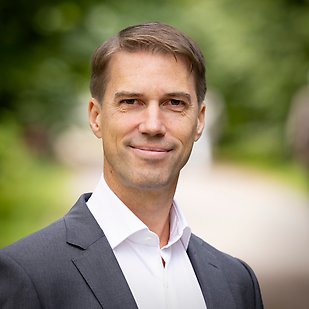
Peter Thelin Schmidt, Medical Gastroenterology and Hepatology
Gastroenterology and hepatology concern diseases of the gastrointestinal tract. My main research interests are chronic inflammatory bowel disease (IBD), pockets in the colon, precursors to cancer, and the early detection of cancer. Endoscopic examination provides the opportunity to study the gastrointestinal tract visually and is a central method in my research. Endoscopy allows detailed examination to be carried out and samples to be collected from both tissue and intestinal flora inside the intestine.
I collaborate with experts in a number of fields, including epidemiology, pathology, computer science, microbiology and molecular tissue studies. The objective of the research is to improve the diagnosis, treatment and care of patients with diseases of the gastrointestinal tract, but also to develop a better understanding of the role of dysfunction in these organs, as well as of the onset of diseases inside and outside of them.
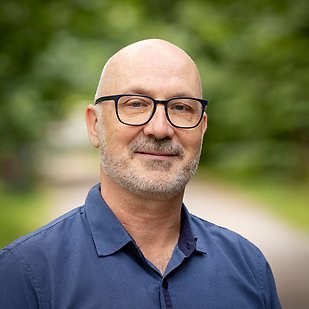
Maria Eriksson Svensson, Renal Medicine
One in ten people in Sweden suffers from renal impairment or signs of kidney disease. The most common causes of chronic kidney disease are obesity, diabetes and high blood pressure. My research is patient-oriented and therefore focuses on studying and identifying the impact of different diseases on renal function in order to understand the underlying causes and mechanisms and thereby prevent the onset of kidney damage.
In patients who have already developed chronic kidney disease, the risk factors associated with renal impairment are identified in order to better treat the complications of kidney disease. To this end, my research group and I are now studying areas including the effects on renal function of kidney donation and weight loss and obesity surgery, as well as the risk factors in diabetes for the development of kidney damage. This is an important area of research since renal impairment is associated with a significantly increased risk of cardiovascular disease.
An important role of a professor of renal medicine is to develop and evaluate new treatments in this field of disease. The studies are conducted through patient examinations and using data from medical records and national registries. We have numerous scientific collaborations with other research groups and the business sector – locally, nationally and internationally. The results of our research will lead to improved treatment and quality of life for patients suffering from kidney disease.
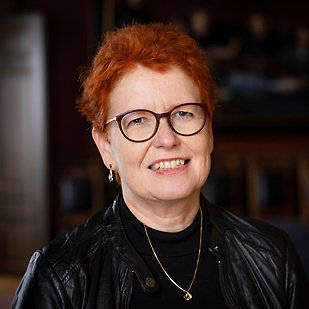
Stina Syvänen, Molecular Geriatrics
As we are now living longer than ever before, more people will suffer from diseases where old age is a risk factor. Alzheimer's disease is one example of such a disease. The objective of my research is to develop diagnostics and new treatments for brain diseases with a focus on the ageing brain.
The brain is a well-protected organ and it is difficult for drug molecules to reach it. In addition, it is often impossible to ‘take a sample’ from the brain. I work a lot with positron emission tomography (PET), which is a medical imaging method that can be used to produce images of the brain, instead of taking biological samples. Using radiolabelled molecules, called radioligands, which bind to specific target systems in the body, we can examine several brain functions and study changes in the brain that are characteristic of disease. PET can therefore be used to diagnose disease, but can also be an important tool in the development of new medicines. In the latter case, we can study the brain before, during and after treatment to see if the drug is reaching the brain with the effects we hope for.
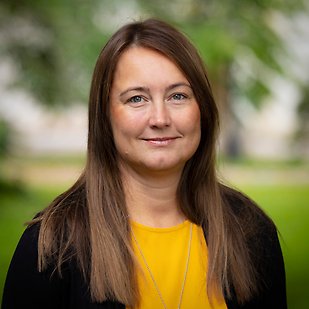
Faculty of Social Sciences
Roland Almqvist, Business Administration, Special Accounting
My research focuses on the processes and effects of major reforms and changes in the public sector, with a particular focus on the implications for the governance and governance models of public organisations.
New Public Management has been hotly debated and criticised as a governance idea for the public sector over the last decade. As an implemented governance model, New Public Management is often blamed for the problems that have arisen in public sector governance. My research results show a more nuanced picture of the governance model, highlighting both advantages and disadvantages. An important part of my research has also been to try to identify when the theories behind the model make too far-reaching demands that cannot be practically met when New Public Management is put into practice for the management and design of governance models, or when the governance model is implemented in practice incorrectly. The results show that there are also elements of ‘both’, i.e. when the theories do not work in practice and when there are clear errors in the implementation of the governance model.
My current research focuses on the question of what happens after New Public Management, and what effects the next governance paradigm – also called New Public Governance – will have on public-sector governance. New Public Governance as a concept of governance brings a broader view of governance and focuses more on trust and cooperation between public, private and non-profit organisations, and on creating networks of different competences to fulfil the social mission.
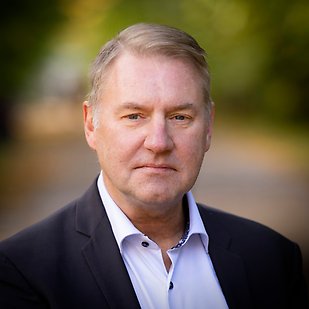
Stina Bergman Blix, Sociology
My research deals with how emotions motivate and shape how we act in different contexts. In particular, I have examined how emotions are expressed in the workplace. Emotions are with us all the time, but we often associate emotions with our private lives, meaning that researching emotions in the workplace is largely about understanding boundaries – how are emotions made professional, how can private emotions be distinguished from professional emotions, and how can we act rationally when we have emotions? I have studied emotions in professions where they are considered to be central, such as acting, and where they traditionally should not be, such as in courts of law.
My main interest in recent years has been in courts of law, where emotions are often seen as incompatible with legally secure work. One question I have been exploring is what happens to emotions in situations where they are not allowed to exist. Perhaps unexpectedly, my research shows that people working in such environments need to increase their emotional sensitivity in order to perceive the barely perceptible expressions of emotion that are nevertheless used. This toning down of emotions has been shown to be particularly prominent in Sweden in comparison with other countries that my research group has studied, such as Italy and the United States. I have also investigated the use of emotions in court decision-making, showing that different emotions are at play at different stages of decision-making, and that seemingly incompatible demands for independence and cooperation make emotions such as trust, doubt and certainty of key importance in the interaction between decision-makers.
The findings of my colleagues and myself are important for understanding the influence on our actions of not only strong but also low-key emotions. This knowledge can be used in professional education at university and in the further training of judges, to make the role of emotions visible and to create the conditions for their use in a conscious way. Ultimately, this is important for everybody who comes to court to have their case heard and to ensure public confidence in the justice system.
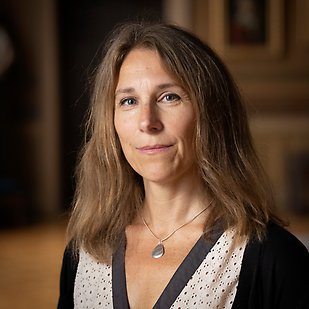
Maria Blomgren, Business Administration
At the heart of my research interests are issues of governance and organisation of public services. The field of business administration, in which I work, is broad and encompasses many perspectives – but still the traditional normative and practical perspective that aims to improve the ability of companies and organisations to do business is strong.
My research profile is different. In general, my intention is to increase understanding of the radical changes in the governance and organisation of key societal functions – in my case, the healthcare sector and schools – that have taken place over the past few decades. A variety of economic models and techniques, often grouped together under the term New Public Management, have been introduced into organisations that were previously governed and organised in other ways.
I have sought to increase both theoretical and practical understanding of what this has meant. I have studied what the changes have meant for the professions working within them, what values and ideals are being pitted against each other, and how this shapes and transforms the active organisations. With this kind of social science-oriented research profile, I join those wishing to critically examine, problematise and increase understanding of the significance of the growing influence of economic models and ways of thinking in our time.
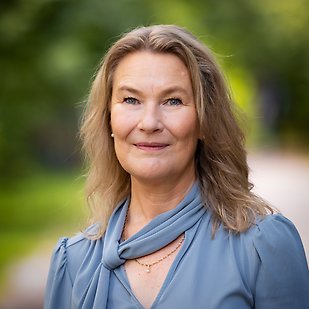
Hanne Fjelde, Peace and Conflict Research
My research explores the relationship between democratic institutions and political violence. Over the last decade, democracy as a form of governance has been put under great pressure. Most countries hold political elections to choose their leaders, but these elections are often marked by violence and injustice.
A key focus of my research has been to understand why some countries experience violence during elections, how violence is used for political ends, and how the risk of violence can be minimised through international efforts or the design of political institutions, for example.
I have also examined the role that violence plays when democratic institutions are undermined and countries move in a more autocratic direction. An important piece of the puzzle has been to understand how the presence of violence affects the political attitudes of the population, such as the willingness to defend political freedoms and rights as well as support for democratic principles.
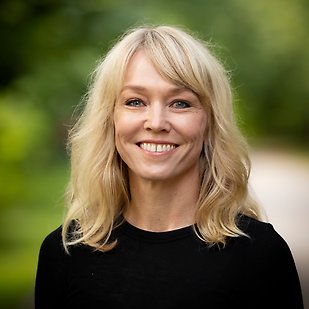
Karl-Oskar Lindgren, Political Science
Democracy is based on the idea that all citizens should have equal opportunities to participate in political life by casting their votes or running for political office. However, the reality is that there are significant differences in political engagement between different groups of society – differences that can affect the extent to which the policies pursued meet the needs and aspirations of these groups.
Much of my research has therefore dealt with describing and explaining inequalities in political engagement in Sweden and other countries. Which groups are underrepresented in politics, and how has their political influence evolved over time? To what extent is the willingness and ability to participate politically passed on between individuals and generations? How is political inequality in society influenced by factors such as the design of the education system and the degree of residential segregation? These are some of the questions I have been researching. By increasing our knowledge about the fundamental processes that govern people's political engagement, I hope to help strengthen and deepen political democracy.
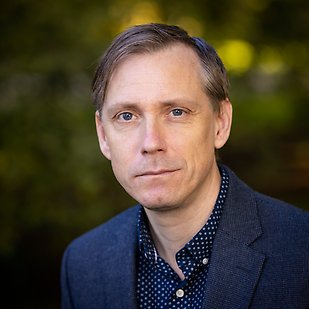
Charles F. Parker, Political Science
As a political scientist, I am particularly interested in threats to people's security and policy measures designed to reduce the risks of disasters. In my research, I have studied the global response to climate change, the success and failure in crisis management, and whether major societal crises can contribute to effective policy responses.
Since climate change is a major and growing threat to humanity, part of my research focus has been on leadership at UN climate summits. The results of questionnaire surveys during the period 2008–2015 show fragmented leadership where aspiring leaders struggle to attract followers. The most important characteristic of a perceived leader is that they are considered to be working for the common good. My research highlights how fragmented leadership resulted in the failure of Copenhagen in 2009, while shared leadership between the EU, US and China contributed to the adoption of the Paris Agreement in 2015.
Another strand of my research focuses on whether and how natural disasters can enable public action to strengthen community protection. My research group analyses the link between natural disasters and measures taken at national and local level to reduce risks and manage the impact of climate change. In a world where climate-related disasters are expected to become both more frequent and intense, it is important to enhance knowledge bout how to initiate and implement positive societal changes.
%20Charles%20Parker%204.jpg)
Tatjana Pavlenko, Statistics
Statistics develops methods to model and study random processes and data, for example in financial, biomedical and technological systems.
Technological advances in applied research are facilitating the collection of ever larger and more complex data sets in which the number of automatically measured variables is increasing at an accelerating rate. The multivariate methods traditionally used for statistical analyses are normally not feasible for use with such high-dimensional data. This has led to a new field – large-scale statistical learning – where statistics and computer science meet and collaborate in order to capture valuable knowledge in high-dimensional data, in other words, to learn from data.
A central theme of my research is to provide theoretical methods with associated computational algorithms for statistical learning with high-dimensional data. My methodological research contributes to the fundamental understanding of the phenomenon of high-dimensionality in theoretical statistics and often results in universal methods with a wide range of applications. These methods are of particular importance in artificial intelligence (AI) and statistical machine learning because AI is often used to identify predictive structural patterns and important trends in high-dimensional data.
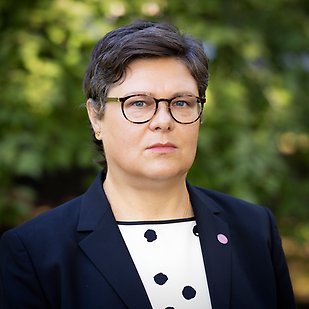
Ann-Mari Sätre, Eurasian Studies
My research focuses on the transformation of Russia and the Soviet Union. In spring 1993, I completed a PhD on the effect of the Soviet shortage economy on the environment and the use of natural resources. I had studied these issues, among others, during several extended stays in the Soviet Union during Mikhail Gorbachev's time in power.
I have also written about the situation of men and women in the Russian labour market of the 1990s, local development, and small business owners. I have studied poverty in Russia in collaboration with Russian researchers. Much of this research is based on interview material from two Russian regions. Now, ten years later, we are making efforts to follow up on the situation.
In my current research, I am studying the roles of women in Russian society. I deal with women's roles in politics, women's efforts to make the social sector work, women's involvement in civil society, women's situation in the labour market, as well as women's entrepreneurship. I have based this research largely on my own interviews over the past twenty years in several regions of Russia. It is one thing to follow politics, but to be able to study implementation requires a practicable and appropriate method such as interviews.
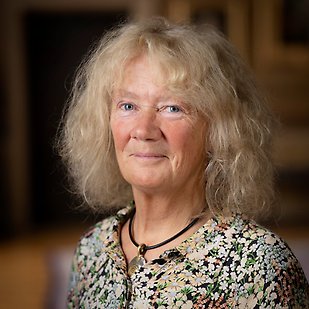
Anders Ögren, Economic History
My research focuses on macroeconomic history, financial and monetary history, corporate history, and the history of economic ideas. Examples include questions about international monetary systems and currency unions, monetary policy, currency regimes, monetary theories and systems, cryptocurrencies, and more. More specifically, I focus on how the financial system contributes to economic growth, the impact of interest groups on regulation, crises and crisis management and their causes and consequences, why some banks encounter problems in crises and others do not, and why the establishment of e-currencies such as the e-krona could lead to financial instability. However, my latest article is written with colleagues at the Department of Archaeology here at Uppsala University and is about the economic organisation of the Vikings.
Economic history is an empirical science based on economic theories and historical data. History is also an infinite resource for understanding our present time. Unfortunately, this means that this resource is often misused by using alleged historical ‘truths’ as arguments in politics, opinion-shaping, and so on. It is therefore the task of an economic historian not to take any ‘truths’ for granted, regardless of how often they have been reproduced and by whom, but to question them and, through the use of a variety of sources and methods, to better understand the process of societal change, the effects of different measures, business cycles, economic policies, etc. Similarly, economic history should test economic theories.
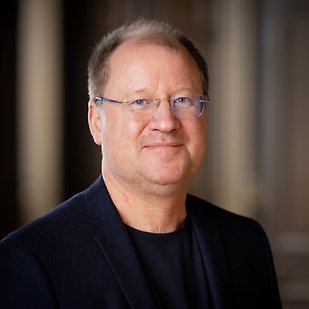
Faculty of Languages
Maria Engström, Russian
My research during my doctoral period focused on the medieval Russian Orthodox literary, theological and visual tradition and on the reception of Byzantine culture in Russia.
My postdoctoral research deals with contemporary Russia, primarily Russian conservatism, nationalism and right-wing populism, and the relationship between the Russian Orthodox Church and the state. I study the neoconservative movement from the perspective of the history of ideas, examine how the conservative utopia is portrayed in contemporary literature, art and film, and analyse how the new conservative culture influences public opinion and politics in contemporary Russia.
It has always been important to me to find unexplored themes and unusual issues, to initiate research on important contemporary phenomena, and to advance our knowledge of Russia. My current research project examines the politics of memory in Russia after the annexation of Crimea in 2014, focusing on how the Soviet legacy is being reworked and transformed to legitimise the country's conservative ideological and political turnaround.
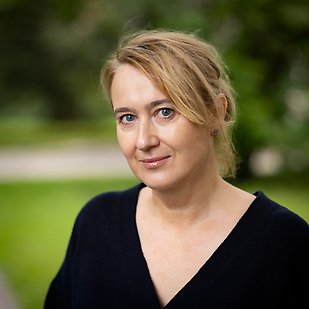
Harald Hammarström, Linguistics
There are approximately 7,000 languages on our planet. The vast majority of languages are small and spoken by minorities around the world. This wealth of languages is a great source of knowledge about how languages work in our brains and for tracing migrationary movements and cultural changes throughout history.
An estimated half of all minority languages are endangered – that is, their speakers switch, to varying degrees, to another major language and completely or partly stop passing on the old language to the next generation of speakers; the Earth's wealth of languages cannot be recreated in a laboratory or similar. It is therefore very important for science to document endangered languages before they become extinct. In my research, I have studied languages in the field, primarily in Indonesian Papua, but also in Peru, Ethiopia and Sudan, as well as among diaspora speakers in Uppsala.
Using descriptions of a large number of languages, broad comparative studies can be conducted across different grammatical characteristics to see what (if anything) is universal among the world's languages. In particular, I have investigated numerals, as well as word order patterns, and have shown that there is both great (seemingly random) variation and, at the same time, certain characteristics that recur more frequently than can be explained by historical events and random outcomes.
Over the last few decades, it has become increasingly practical to use computers to analyse large data sets. I have therefore been a driving force in using these new possibilities for linguistics to organise, collect data and develop new methods.
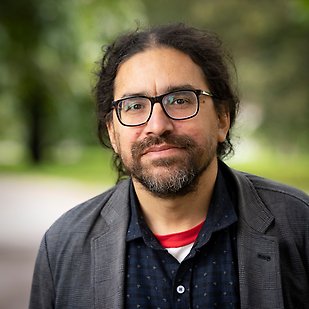
Dan McIntyre, English Language and Linguistics
As a researcher in applied linguistics, my particular interest is in how linguistic theory can help us understand how texts affect society. My primary research interest is the concept of linguistic style, and to explore this I often use corpus linguistics methods, i.e. computational linguistics.
I have studied subjects such as how word choices made by subtitlers can affect our perceptions of actors' characters, how computational linguistics techniques can be used to trace the changes in an author's style, and how the English language has changed since the 16th century. As a result of my interest in the practical application of linguistics, I have carried out consultancy work for the UK Green Party, the House of Lords of the British Parliament and the BBC.
I also have a particular interest in making linguistics accessible to non-specialists. In 2012, I was a co-founder of "Babel: The Language Magazine” – a popular magazine on linguistics. My most recent book is a spin-off publication, co-authored with colleagues, "The Babel Lexicon of Language" (2022).
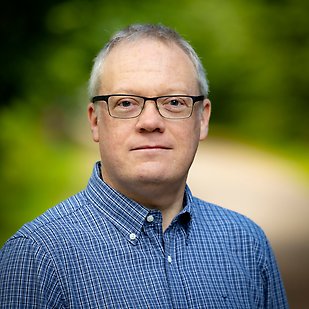
Alexander Pereswetoff-Morath, Slavic Languages
I am a philologist with a special interest in the older phases of the East and South Slavic languages and written cultures, but also in the historical encounters of the Orthodox Slavs with other cultures.
Philologists often concentrate on the concrete ways in which texts came into existence or how linguistic expressions were used in authentic linguistic relics, and often more on the cultural and historical context of a text than on the linguistic systems. To some extent, historical philologists are linguists, and linguists in turn in practice often address philological issues.
The Slavic languages I am mainly involved with are Russian and the linguistic phases that preceded it, and Church Slavonic in its many different guises. My research has included Church Slavonic polemical texts against Judaism, medieval Slavic manuscripts in the Nordic countries, and Russian and its speakers in Swedish Ingermanland during Sweden’s great power era.
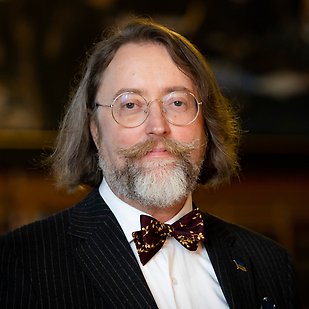
Erik Smitterberg, English Language and Linguistics
English has changed so much throughout history that today's English-speaking population would not understand a thousand-year-old text. However, the period I am researching – Late New English (1700–1900) – was long considered to be an exception in this respect. Not much seemed to change in the language during that period. This is unexpected because the period was characterised by increased social and geographical mobility, which usually coincide with changes in a language.
My research shows that several factors create a false impression of stability in Late New English. One such factor is that the most important change in the English language between 1700 and 1900 arguably consisted of the linguistic drift of different genres. Thus, the linguistic differences between a play and a scientific article were much more pronounced in 1900 than 200 years earlier, as texts that were aimed at a broad public audience came to consist more of spoken English, while the English of non-fiction texts became more unlike spoken English. Since both genres mainly used language traits already present in the English language, but at different frequencies, this change is not noticeable when viewing the language as a whole. To study such developments, I use corpora – searchable electronic collections of text.
Research into language change is also of interest from a more general perspective. Increased knowledge of how and why languages change can contribute to an understanding that all living languages are affected, and that it is a natural part of language use.
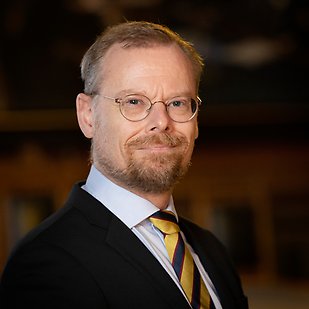
Faculty of Science and Technology
Niclas Backström, Evolutionary Genomics
In order to understand the origins of the biodiversity we see in the world today, it is important to understand how different species emerge and the processes that influence the adaptation of single individuals to the local environment.
Important goals of evolutionary biology include identifying and characterising the parts of the genome that influence the origin of species and the adaptations of organisms to the surrounding environment.
In our research activities, we use a combination of gene mapping, population genetics and comparative genomics in order to understand the genetic background to the evolution of new species and how different species and populations adapt to different environments. We also study how different underlying factors influence how the genome itself evolves over time. Our study systems primarily consist of natural butterfly populations.

Erik Berg, Chemistry with a Focus on Electrochemistry for Energy Storage
In recent decades, the development of batteries has led to a technology revolution, ranging from laptops and electric cars to large-scale energy storage from solar power and wind power. However, a lack of understanding of the basic chemistry behind the energy storage principles of batteries is hampering technological development.
The aim of my research is to develop innovative experiments and tailor-made techniques in order to understand extremely small-scale and short-lived processes that are of importance to battery performance. A million chemical reactions can take place in a battery in just one minute, and I am only interested in a few hundred of them that are directly detrimental to battery performance. This is when you need access to the right tools. I am therefore combining and further developing highly sensitive analytical methods that were originally developed by physicists, biologists and computer scientists, but now in order to reveal the hidden inner mechanisms of batteries. The objective of my research is to develop new design rules for future battery chemistries and thereby accelerate the transition to a more sustainable society.
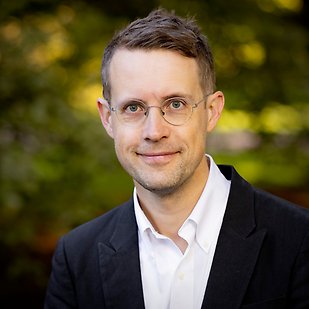
Gerrit Boschloo, Physical Chemistry
The greatest challenges of our time are to mitigate climate change and to manage the Earth's resources responsibly. The Sun is the largest renewable energy source available, which means we need to exploit it as a resource on a much larger scale than we have done so far. Unfortunately, the most common type of solar cells available today – silicon solar cells – require a lot of energy to produce, and it is difficult to increase production to the level needed for the future.
My research includes studying various new types of solar cells with low environmental impact that can be produced in an adaptable way. These new solar cells can produce low cost electricity and compensate for the energy required to manufacture them in a very short time. In dye-sensitised solar cells, dye molecules are bonded onto a porous semiconductor electrode that absorbs light and injects charge. The process is similar to photosynthesis. These solar cells perform well at low light intensities. Research into these solar cells has led to the discovery of so-called perovskite solar cells, where light is absorbed by a lead halide material. This is a very cheap semiconductor with excellent properties and can be used in the production of very efficient solar cells. The challenge is to improve the sustainability of solar cells. Through basic research, modification, and new solar cell structures, my colleagues and I hope to be able to help solve the energy problems of today.
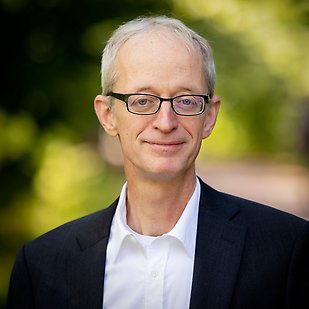
Carl Caleman, Biophysics
In order to understand how proteins work, it is essential to be able to describe their molecular structure. One way to achieve this is by using X-rays. X-rays also have undesirable properties – they ionise the sample under exposure, which destroys the structure. In recent years, X-ray lasers have paved the way for a new method to determine the structure of proteins. The X-ray laser pulses are short high-intensity pulses, leading to a strong ionisation of the sample.
My research aims to understand how this ionisation process affects the molecular structure of proteins and other biomolecules. The objective is to improve X-ray imaging by better understanding the process causing damage. This will lead to higher resolution of the molecular structures we have, which would benefit science where biomolecular structure is important, such as the design of new medicinal products.
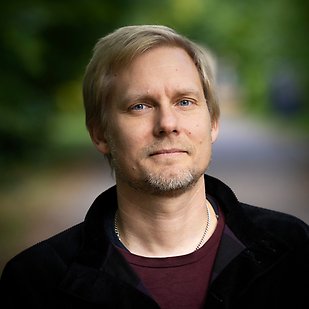
Jens Carlsson, Computational Biochemistry
Many of the physiological processes that take place in the human body are controlled by receptors on the surface of a cell. Receptors can identify the molecules that the body's cells use to communicate with each other, such as hormones and neurotransmitters. When receptors react to a molecule, messages are sent into the cell, activating signalling pathways. This communication system is vital for coordinating the work of cells and it controls a wide range of physiological functions. Scientists have identified several hundred different receptors in humans that perceive different hormones and neurotransmitters. Studying receptors has helped to understand how the body works as well as their links to diseases. A large proportion of today's drugs work by binding molecules to receptors and thereby changing their activity.
My research focuses on understanding how so-called G-protein-coupled receptors work at the molecular level, and on developing new approaches for drug development. We use computer simulations to help us study how the receptors move and identify their interactions with molecules, such as drugs. We know that some molecules can activate a receptor while others block its activity, without yet understanding exactly why.
A more in-depth understanding of how molecules affect receptors will help us to understand physiological processes and lead to new drug candidates. By using supercomputers in our methods, we can quickly search databases comprising several billion molecules to identify candidates that bind to a receptor. We identify the most promising molecules and test them in experiments. This approach will allow us to streamline the costly process of developing new drugs and contribute to new treatments with fewer side effects. My research group is particularly interested in receptors linked to central nervous system diseases, such as Parkinson's disease, and has also contributed to the design of drug candidates to treat cancer and COVID-19.
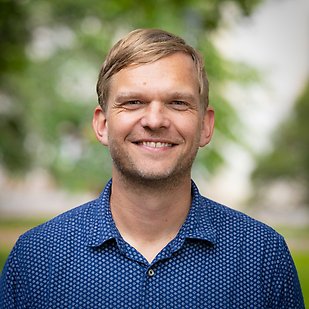
Sebastian Deindl, Molecular Biophysics
To enable the complex processes of life, cells rely on a detailed set of instructions stored in the form of genes in our DNA. In a living organism, cells must be able to selectively turn specific sets of genes ‘on’ and ‘off’. This important function is performed by regulatory proteins, including chromatin remodellers and transcription factors, which help determine which part of the genetic information should be ‘read’, and when.
Failures in the functioning of these regulatory proteins can cause a variety of cancers as well as a number of serious developmental disorders. My group studies the molecular mechanisms of these regulatory proteins in health and disease. We are developing new imaging methods based on fluorescence microscopy that allow us to record the dynamics of individual proteins at work. We also use cryo-electron microscopy to visualise their structures in order to gain a better understanding of how they are turned ‘on’ and ‘off’ as needed.
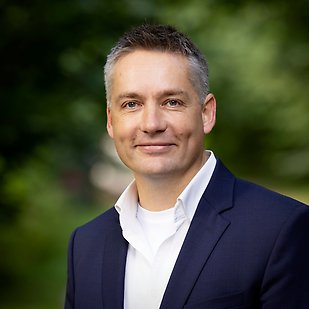
Stefan Engblom, Computational Science
Computational models and simulations are now used as critical tools in technological development, for the analysis of and insight into various fields of science, and to produce decision data for important decisions. When used correctly, computations can replace experiments that are difficult or impossible to perform in real life. As a model is never exact, various types of errors are generally produced, and it is important to attempt to estimate and limit their impact on the final result.
My research has come to deal with simulations of phenomena where the computational model is incomplete, for example because it contains indeterminate terms that can often be understood as a random effect. In order to limit uncertainty, calibration against measurement data becomes important, and a large part of the computational power must therefore be used for this purpose.
Within my group, the focus over time has been to examine applications where the impact of randomness or of model incompleteness has a limiting effect. For example, we have developed simple models of growing tumours and then try to understand how these can be linked to experimental results from cultured tumours. Another strand on a completely different scale is epidemiological models of the spread of disease within populations, such as COVID-19. Here, a major part of the challenge is to reconcile different types of incomplete data sources in such a way that the simulations provide reliable decision-aiding data.
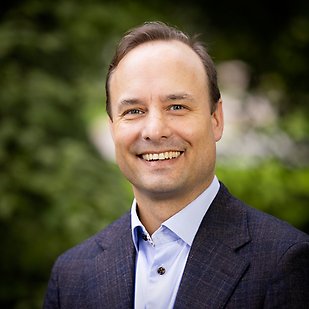
Michael Hazas, Human–Computer Interaction
The human–computer interaction research field studies the interaction between humans and machines – such as information technology, automation, robots, and intelligent interfaces. From a global perspective, its objective is to improve the relationship between humans and technology, and to use technology to promote positive social change.
My research focuses on everyday tasks and digital technologies, and how they can be related to sustainability (energy needs and carbon emissions).
Much of my most recent work has focused on the proliferation of online services (streaming, social networking, gaming), and their invisible sustainability impacts linked to the internet and data centres. I have also carried out comprehensive studies of thermal comfort and digital automation. I employ both qualitative and quantitative methods.
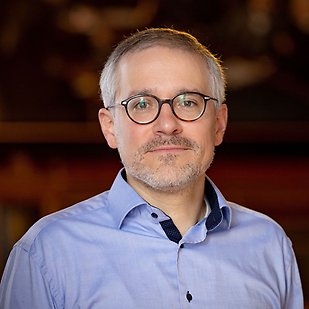
Stefan Ivanell, Energy Technology
Wind power is a very important part of the current energy transition. My research focuses on air flow patterns around individual wind turbines, in larger farms both offshore and in undulating forest landscapes, and how entire wind farms affect each other's energy production.
Phenomena I study include the impact of turbine blade vortices on downstream turbines thereby increasing fatigue loads, how the forest affects turbulence levels a long way from the origin of the turbulence, and how far behind large farms wind speed and turbulence are affected. All of these phenomena are also affected by periodically varying properties of the atmosphere. Both turbines and farms are growing in size and interact with flows higher up in the atmosphere. It is important to understand these flows in order to achieve optimal positioning and control of the turbines.
Large data calculations are used to carry out these studies, analysing flow structures that range from small to very large. A large part of the research focus is on developing efficient computational models, given the challenge of performing calculations that combine both large and small scales.
Part of the research is also focused on the increasing importance of the system perspective due to the growing role of wind power in the future energy transition.
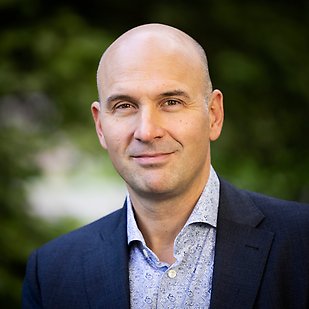
Vassilios Kapaklis, Materials Physics
Materials properties are determined by structure and chemical composition on different length scales. Being able to control and design them, from the atomic to the macro scale, is vital to material performance and facilitates new and innovative methods of material synthesis. By applying advanced nanotechnologies and microtechnologies to create artificial materials with designed structure and composition at arbitrary length scales, a class of materials called metamaterials is produced. Metamaterials typically exhibit properties beyond those found in natural materials.
My research focus is on how these concepts can be realised in order to create magnetic metamaterials. These consist of billions of interacting and lithographically patterned nanomagnets placed on two-dimensional ‘lattices’. All of the nanomagnets can be combined to mimic the periodic magnetic order of conventional magnets, or even more exotic states, such as magnetic analogues of liquids.
Magnetic metamaterials could play an important role in a new generation of hardware for metamaterial calculations and data storage. These cutting-edge solutions are focused on specific and energy-intensive computational tasks, such as optimisation and partial differential equations arising in artificial intelligence and machine learning. In addition, such systems can be used as models for studying the emergence of structure in a range of complex systems, in biology, economics or societies.
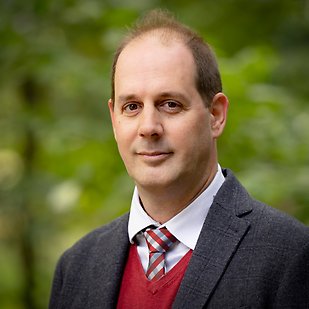
Vaishali Katju, Molecular Evolution
My research combines experimental evolution in the model organism Caenorhabditis elegans with genome analysis in order to investigate and answer fundamental questions in biology and evolution.
In this system, we can study spontaneous mutations in the cell nucleus and mitochondria, the rate at which they occur, possible effects on the organism's fitness for purpose and the evolutionary dynamics of the mutations.
My research group also contributes to studies on how natural selection and genetic stochasticity contribute to the emergence of reproductive incompatibilities that lead to the genesis of new species, genomic conflict, and the genetic basis of adaptation following fitness decline and recovery.
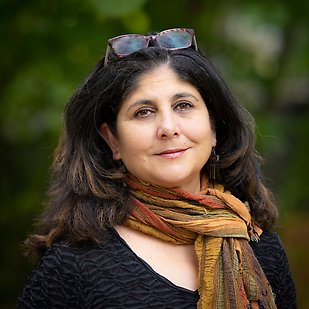
Ingela Lanekoff, Analytical Chemistry
Small molecules have a major impact on the function of biological systems. For example, amino acids are needed to control signals in the brain and lipids are needed to generate energy and regulate inflammation. If the composition of the molecules becomes unbalanced, it can lead to various types of disease states. New analytical methods need to be developed in order to monitor the molecular composition of biological systems and understand its relationship to health and disease.
My research creates new analytical methods to detect unique molecules and molecular compositions in tissue regions and individual cells. For example, my research team and I can generate images of where hundreds of individual molecules are located in thin tissue sections of brain or kidney in a single experiment. In addition, we are building new analytical platforms in order to characterise molecules in individual cells and gain deeper insights into cell behaviour. By combining analytical techniques with chemical interactions, we can also identify specific molecules, such as so-called prostaglandins and isomers, that have distinct effects on the biological function. Taken together, this provides new and exceptional information about which processes are at work in tissue regions or cells and how these are affected in disease states, which is crucial for understanding biological systems and developing medical treatments of the future.
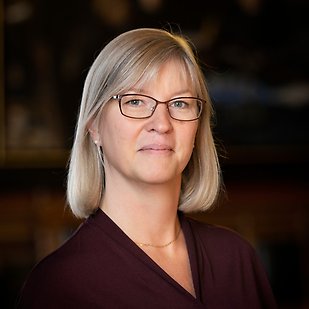
Joakim Lindblad, Computerised Image Processing
Digital image data – from video clips on a mobile phone to X-rays of a brain, or images of black holes from a space telescope – contain vast amounts of information. I study and develop methods of processing and analysing images in a computer, in order to extract and quantify information in digital image data so that it can be used quickly, cheaply and safely for early detection of diseases, monitoring forest fires or driverless car operation on a motorway.
Methods based on deep machine learning and artificial intelligence are now popular in image processing. Such methods can adapt to different types of image data and ‘learn’ how to interpret them. By learning from large datasets, these techniques can become much better at interpreting images than a human can, which is expected to revolutionise medical diagnostics, among other things.
One disadvantage of such advanced models is that it can be difficult to know exactly what information is being used as well as how the model arrives at its result. In order to rely on models in life-and-death situations, we humans want to understand how they work. Much of my research involves developing methods to interpret learning models, in order to describe what they have learned. Such methods can be used to make more accurate models, as well as to discover new unknown relationships within the data from which the model has learned – to understand not only the model, but also the underlying phenomena that we observe.
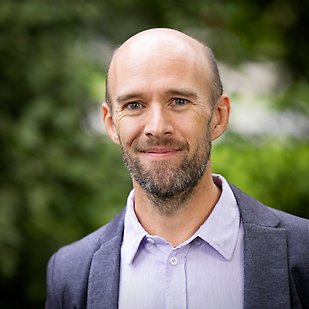
Ida-Maria Sintorn, Computerised Image Processing
Digital imaging deals with the development of machine learning methods and mathematical algorithms to extract information from and analyse digital images. My research focuses on the analysis of microscopic images of biological materials for drug development and diagnostics. For example, detecting and recognising viruses or detecting disease-related changes in cell structure using light or electron microscopes.
Part of my research focuses on strategies to automate image acquisition in multiple magnification steps so that the enormous area of a sample at high magnification can be efficiently inspected and analysed. This means identifying at low magnification which areas to image and analyse at higher magnification, and how information from multiple images can be combined to improve microscope performance in terms of speed, resolution and image quality.
Another part of my research is focused on strategies to optimally incorporate human expertise into interactive image analysis systems. In many cases, some expert guidance is needed in order to adapt image analysis methods to specific problems and applications. For example, expertise is provided in the form of a few highlighted examples of objects or regions with a particular appearance. A search for similar areas or objects can then be made in a large image set, providing information on, for example, the number of cells or area of tissue affected in a certain way by adding a pharmaceutical substance.
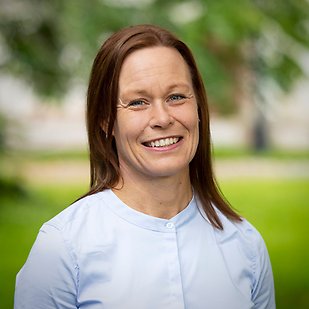
Nina Sletvold, Biology, Specialising in Plant Ecology
My research group studies issues related to the ecology, evolution and conservation biology of plant populations. The group is interested in how different ecological factors influence the survival of populations, and in the ecological and evolutionary consequences of interactions between plants and animals.
I am particularly interested in fundamental questions relating to natural selection, and study the environmental factors that contribute to maintaining character variation within and between populations. The focus is on the interaction between plants and pollinators, and the role that pollinators play in the evolution of diversity in flower shape, colour and fragrance.
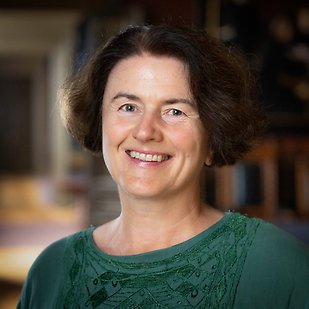
Tobias Wrigstad, Computer Science
My field of research is programming languages, that is, the languages that programmers use to communicate with each other by means of code about how a program works and controls our digital environment. A program often consists of millions of instructions used to control a machine, but the main purpose of the code is to communicate with a human reader. Sometimes, the reader is the same person who wrote the code. However, it is usually a completely different person, or rather, many different people.
For a machine, it does not matter how the instructions in the code are organised, or how the developers of the program were thinking when they wrote it. For us humans, it is of the utmost importance – for example, when we want to make sure that the program will execute correctly, when we want to understand how the program can be further developed, or when we want to correct an error. All these activities require us to be able to understand the program.
My research focuses on the tradeoff between expressiveness on the one hand, the ability to say a lot with few ‘words’, and control on the other, that is, the ability to exclude certain types of errors, for example – or to determine that certain optimisations do not affect the correctness of the program. In particular, I have focused on how to organise the data that a running program creates and manipulates, and how a programming language should be designed so that information about the organisation of the data can be communicated between human readers without compromising expressiveness. I have also explored how a computer can be used for the user to prove that a program respects the intended organisation of its data. Together, this allows a programmer to make claims about a program in a way that both helps a human reader understand the program and allows the computer to verify that the claims are true. This is the key to writing programs that are more accurate, simpler to understand and develop further, and that can execute faster or consume less energy.
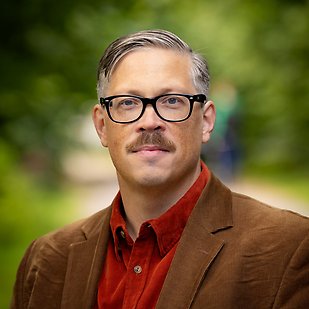
Faculty of Theology
Per Sundman, Ethics
Ethics is the critical study of ideas about how people should live. It examines the conditions for moral knowledge, moral language and practices such as migration, research, entrepreneurship and new technologies.
Of particular interest to me are the conditions for assessing the validity of moral concepts. The ethical concepts I pay particular attention to are human rights and social justice as expressions of political morality. I focus on religious and secular notions of equitable, or less inequitable, ways of organising societies.
I argue that the non-private nature of language can serve as a starting point for assessing alternative interpretations. Human rights overlap and differ from social justice in thought-provoking ways. Discussions on rights are rarely based on distributive comparisons. However, my research shows that inequity in the form of unequal distribution of influenceable life opportunities follows from an individual right to be respected as an autonomous person.
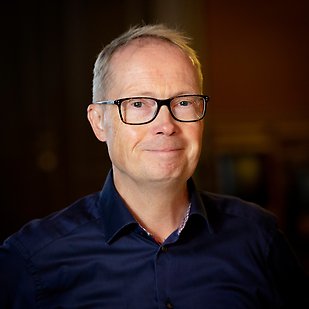
Faculty of Education
Katarina Gustafson, Child and Youth Studies
Child and Youth Studies is an interdisciplinary subject that focuses on the life conditions and agency of children and young people. Here, I have taken a particular interest in temporal aspects of the everyday lives of children, focusing on their mobility, socialisation and identity in mobile preschools, schools and urban settings. In my most recent project, I am studying together with colleagues how preschools in dense urban environments use public spaces for their daily outdoor activities.
Through ethnographic studies, I am deepening knowledge of how the everyday lives of children in local contexts are connected to social phenomena such as urbanisation, segregation and the marketisation of education. In this way, my research contributes to an understanding and critical examination of the living conditions of children, as well as how they experience and manage these conditions in their everyday lives.
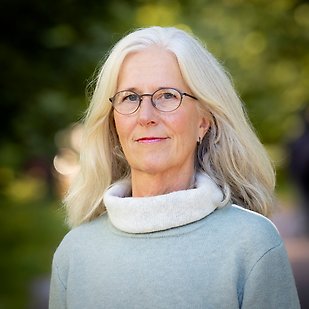
Marie Karlsson, Education
I study narratives and storytelling as educational processes with the power to both sustain and challenge identities and social orders. In our capacity as individuals, we create meaning through storytelling, while being shaped and nurtured by the narratives we encounter in social contexts and in different media. In groups, from families to nations, we are held together by both retelling old stories and creating new ones about what unites us and what sets us apart from others.
My research has studied stories and storytelling as identity-creating social acts in different educational contexts, such as family, peer groups, preschool and school. I am interested in how narratives of personal experiences navigate culturally accepted narratives of how things should be. Some studies have focused on how parents relate to norms of good parenting and norms of good childhood in narratives of child care. Other studies have focused on how schoolchildren and students position themselves in relation to culturally accepted narratives about bullying or teaching, among other things. In addition to oral storytelling, I have also studied online stories and narratives, such as in homework help marketing or in chat communications between Harry Potter enthusiasts. In recent years, I have taken an interest in how stories help to sustain and challenge supportive social institutions such as family, preschool and school.
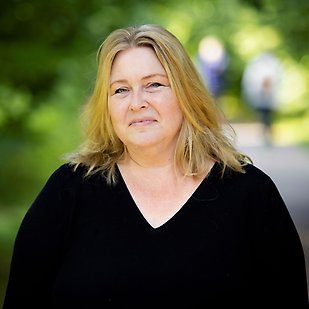
Thomas Nygren, History and Civics Education
I have broad research interests that include education for international understanding, historical thinking, digital literacy, critical thinking, and human rights in a digital world.
I am research leader of the GÄCKA project, i.e. General and subject-specific approaches to digital source criticism in social studies, history, biology, psychology and photographic imaging. Within the framework of the project, we are studying how teaching in practice can stimulate students to improve their ability to handle digital information in a critical and constructive way. Professional teachers and researchers in the project together produce and test different approaches to teaching and investigate how different work methods can support the ability of students to handle digital information in different subjects and across subject boundaries.
In addition, I lead the News Evaluator (Nyhetsvärderaren), a tool we have developed that teaches an evidence-based approach to online source criticism. Teachers and course leaders can use the News Evaluator to teach source criticism, but the tool can also be used by anyone who wants to practice their source criticism skills on their own.
